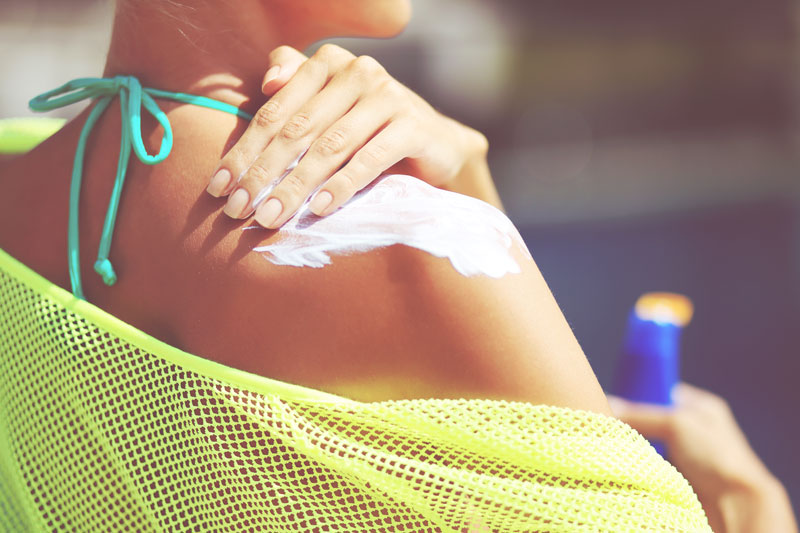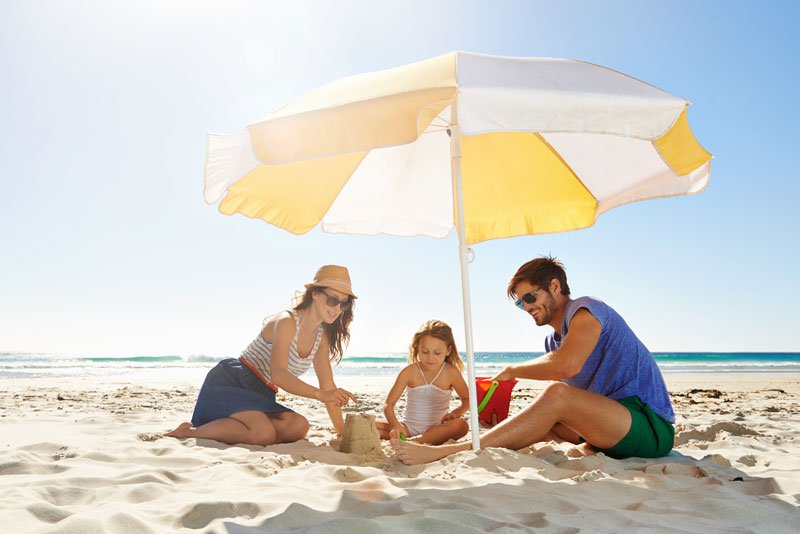Skin Cancer Awareness Month
9th May 2018
9th May 2018

May is Skin Cancer Awareness Month. Throughout May, people are being encouraged to do their part to raise awareness about this disease.
Avoiding too much sun, covering up and using good quality sunscreen is the key to preventing skin cancer. Early detection is important too.
Skin cancer is a disease that affects people of every age, gender and ethnicity. But there is good news: Because skin cancer is chiefly a lifestyle disease, it is also highly preventable.
About 90% of nonmelanoma skin cancers and about 86% of melanomas are associated with exposure to ultraviolet (UV) radiation from the sun.
Knowing the risk factors and practicing sun protection year-round are key to reducing your risk.
“It’s never too early or too late in life to start protecting your skin from sun damage. Parents and caregivers should teach children about sun protection at an early age and help them instil lifelong habits. And even after a lifetime of sun exposure, older people can stop further damage to their skin by making sun protection a priority.”
– Deborah S. Sarnoff, MD, president of The Skin Cancer Foundation

The Skin Cancer Foundation is the only global organisation solely devoted to the prevention, early detection and treatment of skin cancer.
The mission of the Foundation is to decrease the incidence of skin cancer through public and professional education and research. Since its inception in 1979, the Foundation has recommended following a complete sun protection regimen.
Here are The Skin Cancer Foundation’s tips for reducing your skin cancer risk:
Be sure to seek shade especially between 10AM and 4PM when the sun is strongest. An extra rule of thumb is the ‘shadow rule.’
If your shadow is shorter than you are, the sun’s harmful ultraviolet (UV) radiation is stronger; if your shadow is longer, UV radiation is less intense.
A person’s risk for melanoma, the deadliest form of skin cancer, doubles if he or she has had five or more sunburns at any point in life.
UV radiation from tanning machines is known to cause cancer in humans. Indoor UV tanners are 74% more likely to develop melanoma, one of the deadliest forms of skin cancer, than those who have never tanned indoors. Tanning bed users are also 1.5 times more likely to develop basal cell carcinoma and 2.5 times more likely to develop squamous cell carcinoma, two of the most common forms of skin cancer. The more time a person has spent tanning indoors, the higher the risk.
Wear a broad-brimmed hat and UV-blocking sunglasses. Clothing can be your most effective form of sun protection, so make the most of it with densely woven and bright- or dark-colored fabrics, which offer the best defence. The more skin you cover, the better, so choose long sleeves and long trousers whenever possible.

Be sure to use a sunscreen with an SPF of 15 or higher every day. For extended outdoor activity, use a water-resistant, broad-spectrum (UVA/UVB) sunscreen with an SPF of 30 or higher. Apply approximately two tablespoons of sunscreen to your entire body 30 minutes before going outside. Reapply every two hours or immediately after swimming or excessive sweating.
Sunscreens may be used on babies over the age of six months, but they should also be protected by shade and clothing. Children are very sensitive to ultraviolet radiation – just one severe sunburn in childhood doubles the chances of developing melanoma later in life.
While self-exams can’t replace a skin exam performed by a doctor, they offer the best chance of detecting the early warning signs of skin cancer. If you notice any change in an existing mole or discover any new spot that doesn’t heal after several weeks, see your doctor immediately.
To ensure you’re kitted out for the summer, head to Jack Wills in The Pantiles to browse their fashions and accessories, including sun dresses, swimsuits, t-shirts and hats. And pop in to Imperial Pharmacy where they can advise on the best sun protection products to suit your needs.
For more information about Skin Cancer, visit skincancer.org, or follow them on Facebook or on Twitter.